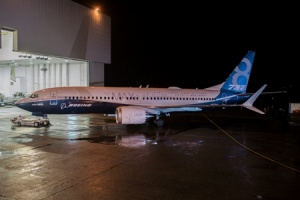Boeing completes 737 MAX 8 configuration

Boeing has completed the firm configuration of the 737 MAX 8.
This milestone marks completion of the major trade studies that define the capabilities of the 737 MAX family.
“We have defined the design requirements for the 737 MAX that provide our customers with the most value in the single-aisle market,” said Michael Teal, chief project engineer, 737 MAX, Boeing Commercial Airplanes.
“We continue to follow our disciplined process to ensure that we have completed all the requirements for the development stage of the program and are ready to begin the detailed design phase.”
As detailed designs are completed and released, production can begin.
Final assembly of the 737 MAX 8 is scheduled to begin in 2015 with first delivery scheduled for the third quarter of 2017.
The 737 MAX will be 13 per cent more fuel-efficient than today’s most efficient single-aisle airplanes and eight percent more fuel-efficient per seat than tomorrow’s competition.
The configuration includes new LEAP-1B engines from CFM International that are optimized for the 737 MAX, a redesigned tail cone and the Boeing designed Advanced Technology Winglet to reduce fuel use.
Other changes incorporated include upgrades to the flight deck displays, an electronic bleed air system and fly-by-wire spoiler flight controls.
“The 737 MAX will not only be the most fuel-efficient airplane, it will maintain the 737’s industry-leading reliability,” said Keith Leverkuhn, vice president and program manager, 737 MAX program, Boeing Commercial Airplanes.
“We are working closely with our customers and industry partners to ensure that the airplane we deliver will perform as promised.”
Additionally the MAX will take advantage of advancements in connectivity.
“As we continue to improve connectivity on the 737 platform, the 737 MAX will offer customers the capability to use real-time data to make operational decisions around maintenance on the ground during flight,” said Leverkuhn.
“This will allow airlines to more efficiently manage their fleets. Enhanced connectivity also will benefit passengers as the demand for more wireless access to information and entertainment in flight continues to grow.”

